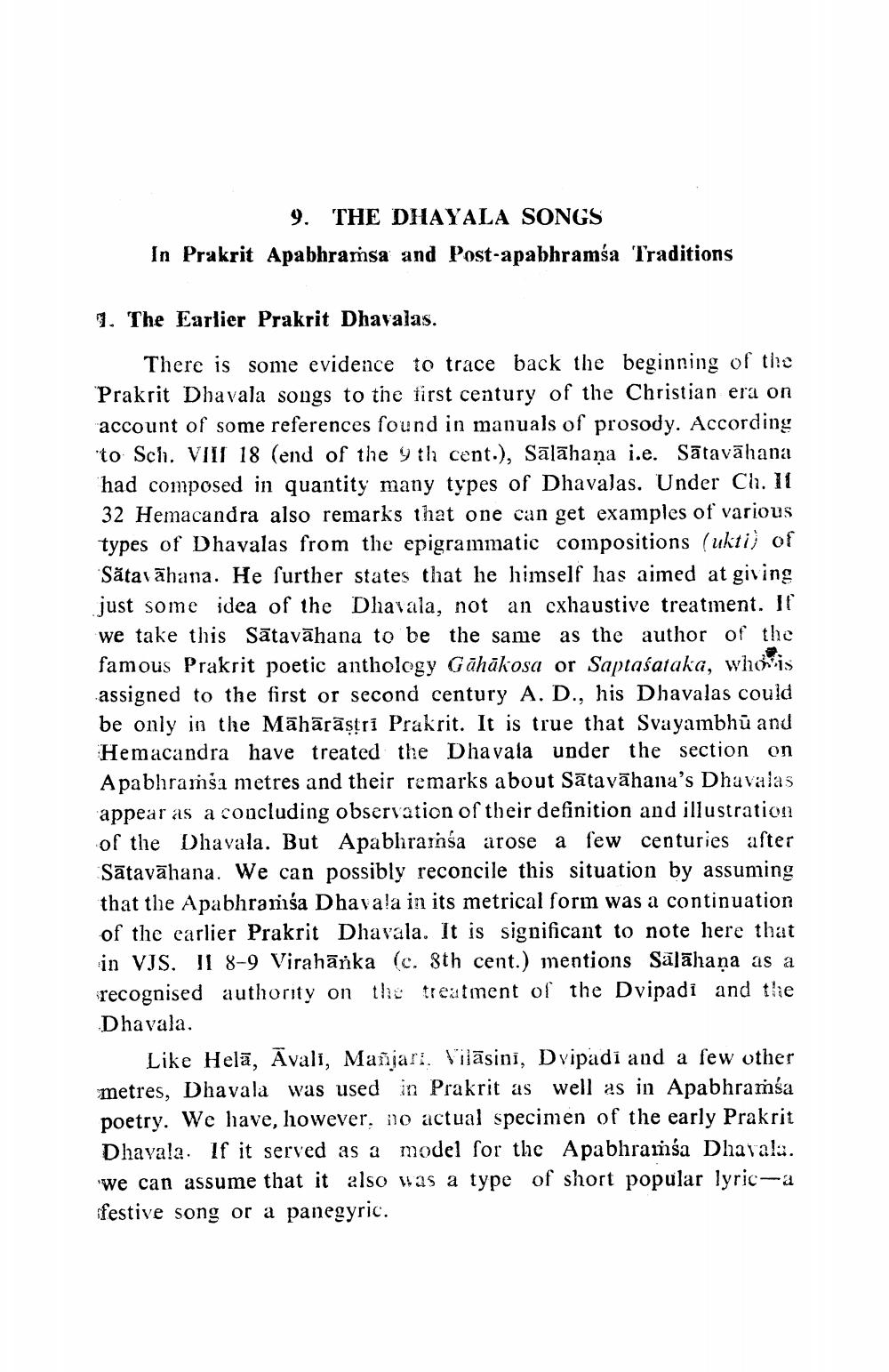________________
9. THE DHAYALA SONGS
In Prakrit Apabhramsa and Post-apabhramsa Traditions
1. The Earlier Prakrit Dhavalas.
There is some evidence to trace back the beginning of the Prakrit Dhavala songs to the first century of the Christian era on account of some references found in manuals of prosody. According to Sch. VIII 18 (end of the 9 th cent.), Salahaṇa i.e. Satavahana had composed in quantity many types of Dhavalas. Under Ch. It 32 Hemacandra also remarks that one can get examples of various types of Dhavalas from the epigrammatic compositions (ukti) of Satavahana. He further states that he himself has aimed at giving just some idea of the Dhavala, not an exhaustive treatment. If we take this Satavahana to be the same as the author of the famous Prakrit poetic anthology Gāhākosa or Saptasataka, who is assigned to the first or second century A. D., his Dhavalas could be only in the Mahārāṣṭri Prakrit. It is true that Svayambhu and Hemacandra have treated the Dhavala under the section on Apabhramsa metres and their remarks about Satavahana's Dhavalas appear as a concluding observation of their definition and illustration of the Dhavala. But Apabhramsa arose a few centuries after Sātavāhana. We can possibly reconcile this situation by assuming that the Apabhramiśa Dhavala in its metrical form was a continuation of the earlier Prakrit Dhavala. It is significant to note here that in VJS. II 8-9 Virahānka (c. 8th cent.) mentions Salāhaṇa as a recognised authority on the treatment of the Dvipadi and the Dhavala.
Like Hela, Avali, Manjari, Vilasini, Dvipadi and a few other metres, Dhavala was used in Prakrit as well as in Apabhramsa poetry. We have, however, no actual specimen of the early Prakrit Dhavala. If it served as a model for the Apabhramsa Dhavala. we can assume that it also was a type of short popular lyric-a festive song or a panegyric.




